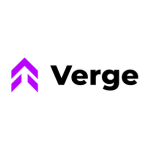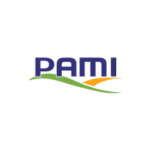
Optimizing Agricultural Operations with Quantum Computing
Advancing precision agriculture technology with quantum computing to transform the agriculture sector.
Project Overview
Updated January 21, 2025.
The Problem
The global agriculture sector is facing critical challenges with a growing world population and finite land. Meanwhile, factors like climate change, soil degradation and inefficient farming practices are impacting agriculture productivity. Further complicating the picture, the agriculture sector is one of the largest contributors to GHG emissions worldwide.
There is an urgent need to revolutionize how agriculture resources are managed and optimized to address the competing challenges of food security, economic viability and environmental sustainability. Decision makers and researchers need tools that can plan, simulate and compare agriculture operations for large swaths of land, as well as for thousands of farms, all in real-time. These tools need to dynamically adjust to constantly changing variables like weather patterns, soil conditions and crop status. Traditional computation methods, however, are inadequate to handle these complexities.
How We Are Solving It
Led by Verge Ag in collaboration with D-Wave, the Prairie Agricultural Machinery Institute (PAMI), the University of Northern British Columbia (UNBC) and Mitacs; this project aims to advance novel precision agriculture technology poised to revolutionize the agriculture sector with quantum computing. The project represents one of the world’s first, if not the first, customer-facing, real-world product powered by quantum computing with previous quantum computing applications being for large organizations in internal optimization.
The consortium will seek to apply quantum processes like quantum annealing, pioneered by D-Wave, and hybrid quantum-classical systems to agriculture planning and optimization. These quantum computing approaches allow the technology to handle complex, variable-intensive calculations far beyond the scope of traditional computing methods. For example, traditional computation methods typically require days or weeks to compute solutions, whereas quantum computing can find these solutions in minutes or hours.
By integrating the capabilities of Verge Ag’s Launch Pad Platform and D-Wave’s Leap Quantum Cloud, the solution can model and simulate intricate agricultural scenarios at unprecedented scale and speed. More specifically, it provides enhanced field design, path planning and equipment decisions for large land areas, such as for counties, regions, territories and provinces. It can also incorporate real-time data from sensors, satellite imagery and weather forecasts to adjust to ever-changing conditions.
Policy makers, agricultural organizations, agricultural manufacturers and growers can use the user-friendly interface for a range of key decisions, including optimizing machinery fleets and creating optimal path plans that consider field shape, terrain complexity, GHG emissions and soil compression. It also gives them the ability to assess the impact of equipment choices. Together, this information will allow them to reduce operating costs, enhance crop yields and implement sustainable farming practices.




